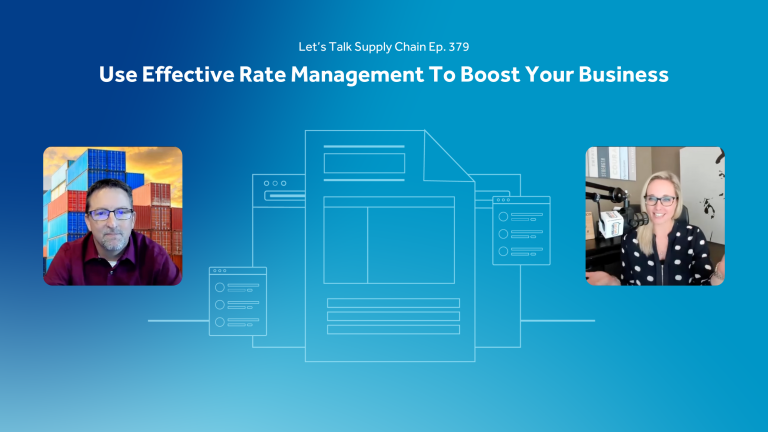Everyone that eagerly awaits a package relies on track and trace technology to tell them when to be at their door, rather than sitting on their doorstep jumping up at each delivery truck that passes (it’s the Amazon effect for consumers). In the shipping industry, however, this is far less prevalent.
Smaller fleets often lack access to locations-based tracking for their assets. At companies where this is an option, many drivers don’t like to feel like Big Brother is watching over them.
Late last week, the Envase team published our latest State of Dray segment on the Let’s Talk Supply Chain Network. In the piece, we discussed track and trace technology from the standpoint of why shippers appreciate location data. The gist was that shippers aren’t asking carriers to share their whereabouts because they want to be creepy. Instead, today’s most progressive shippers and receivers are looking to optimize their working hours; it’s possible to have warehouse teams ready to receive the moment a truck arrives. There are also some shippers whose legal teams are asking for location data to limit their liability in the event of an accident.
But the value of track and trace isn’t limited to shipper requirements.
Why Track and Trace is Beneficial for Carriers
Trucking companies today can gain tremendous benefits from implementing track and trace location data into their operation, including:
Improved utilization of your office staff
How much time is your team spending on check calls? How often does someone in your office need to stop something productive (like responding to an RFP to increase business) to find out where a driver is? Leveraging track and trace eliminates a huge portion of this issue, helping office staff focus on the most important activities to the business.
Better understanding of your operating expenses
Even though fuel costs have dropped a bit over the last few months, they’re still quite high, meaning drivers should be trying their best to maximize their miles per gallon (you could easily argue this is always true, but it’s more important when rates are low and costs are high).
Carriers that utilize track and trace across their fleet gain a rapid understanding of which drivers are proceeding in ways that cut costs, and which drivers are consistently hammer-down. Knowing this allows fleet leaders to address the issue and put drivers in a position to help the company succeed financially. Additionally, the drivers increasing the company’s costs are more likely to earn a speeding ticket or other moving violations. There’s a little bit of a “big brother is watching” component to this point, but the reality is pretty simple: drivers are less likely to bend the rules if they believe they’re in a position to get caught. Track & trace technology allows for safer driving, extended MPG, and less chance of a moving violation.
Lower insurance premiums
This may be outside the box, and it goes beyond the note above (we agree that fewer moving violations will generally mean less costly insurance). At the Harbor Trucking Association’s annual DrayTech event, many insurance companies exhibiting and in attendance acknowledged that a carrier’s ability to produce a digital log of their movements could be considered in the underwriting process. Generally speaking, these insurance folks said they’d prefer data from an ELD solution, but as you may know, ELD requirements can vary by carrier type and state. Track and trace logs can suffice for these carriers to show their drivers’ safety.
Track and Trace Technology Benefits You and Your Customers
Track & trace technologies can be the difference between winning and losing a bid with a premium shipper. But the benefits can go even further for carriers that make the data these solutions provide actionable — improving efficiency, cutting costs, and maximizing the value of each dollar they spend.




